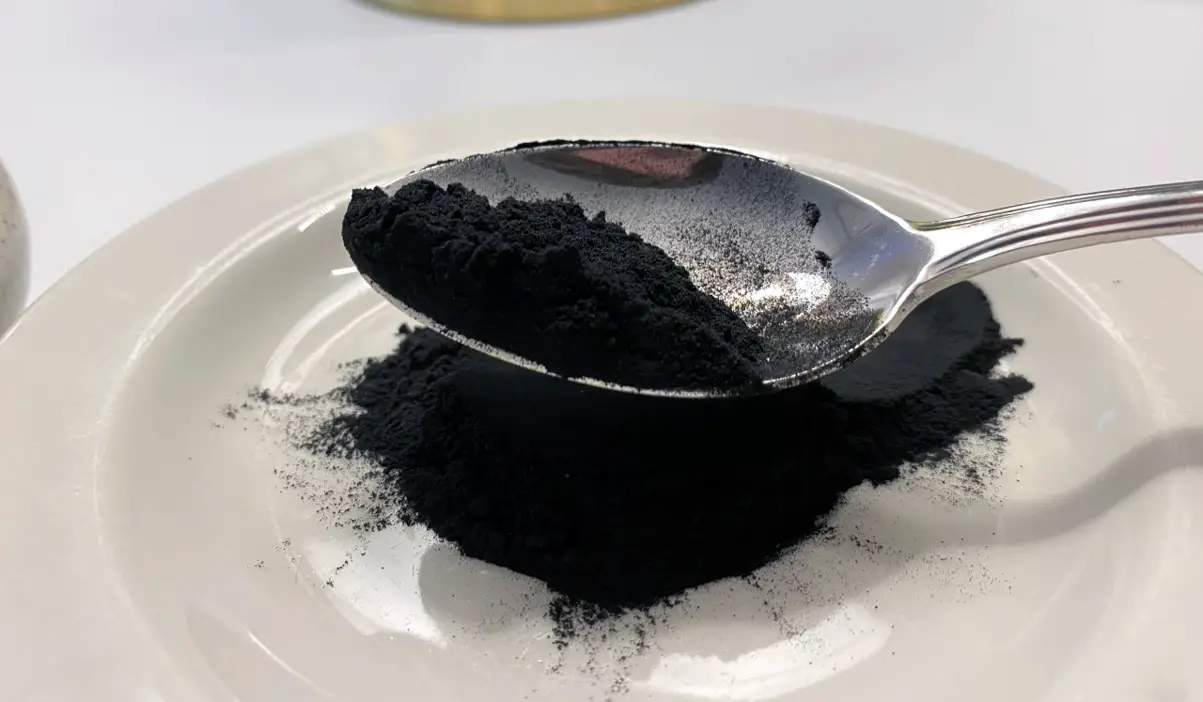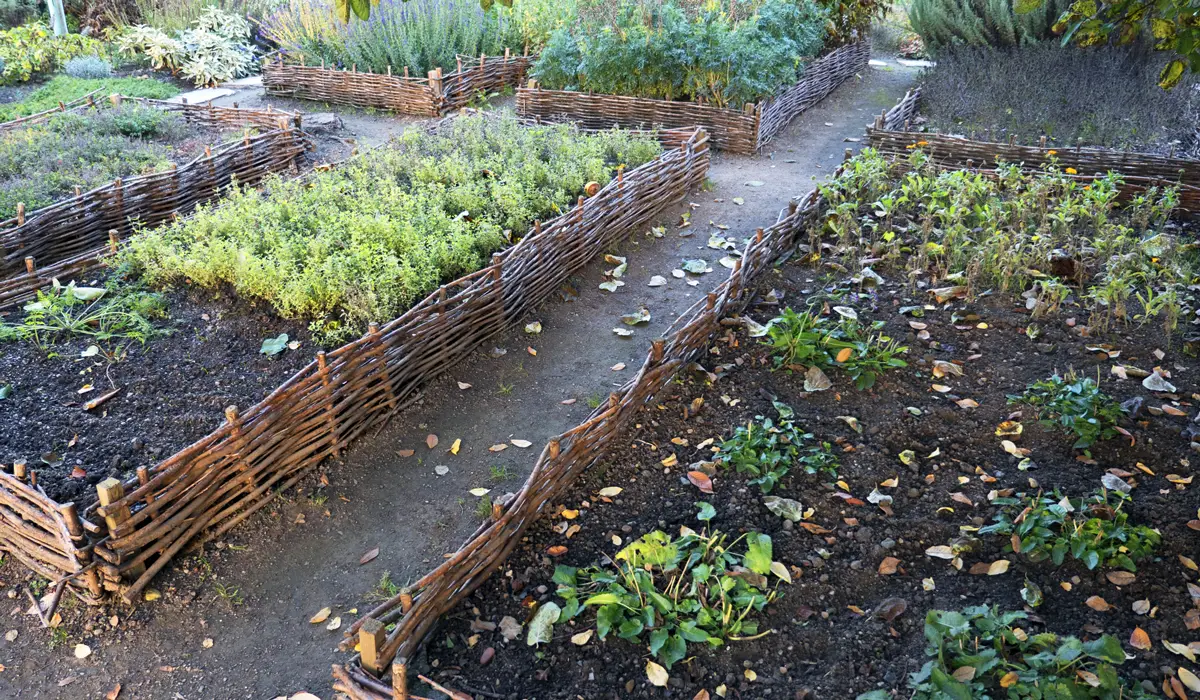Humic Acid Fertilizer For Plants: A Complete Guide

This post follows our research editorial guidelines.

The science of soils is one of my chief pleasures when gardening outdoors. I love observing how a carefully applied 16-4-8 fertilizer in the right season can grow deep green leaves, and how different tools can impact how a fertilizer is taken up. Humic acid is one such tool we can use to make the most of our soil, and change its chemistry for the better.

Table of Contents
What is Humic acid used for on plants?
Humic acid is a complex group of compounds derived from the decomposition of ancient plant and animal material, extracted from coal or peat. It contains a variety of different chemicals, with properties ranging from root support, nutrient transport and into improving overall soil condition.
What is Humic acid made of?
Humic acid is produced by the natural decay of organic material over a long period of time, deep within the soils.
It first forms in humus, leafmolds and in buried organic material beneath the ground. As time passes and the material breaks down, sugars, starches and proteins are lost. Left behind is a complex mixture of mineral salts and related compounds, including humic acid.
Most commercial humic acid is refined from coal. It’s crushed and acid treated until a useful material emerges. It might sound harsh, but this procedure extracts the plant based compounds locked away by long departed forests. Coal is, after all, made of ancient plants.
“Humic substances are complex organic molecules that occur naturally in soils, sediments and water. They also make up a large proportion of the organic matter in peats and brown coals. Humic products are manufactured from brown coals, peats, composts and other organic material.”
Kim Billingham, Project Officer, New South Wales Department of Primary Industries.

The benefits of using Humic acid
Improved Access to Nutrients
Humic acid’s greatest attribute is providing plants with access to nutrients that would otherwise be unavailable.
To put it simply, plant roots have a mild negative electrical charge that they use to ‘suck up’ minerals from the soil. In time, the soil closest to the roots becomes depleted of these minerals.
Humic acid has its own mild electrical charge, stronger than the soil around it but milder than that of plant roots. It draws minerals to it, which are then drawn to the roots by their stronger charge. It acts like a chain, pulling in minerals that would otherwise be lost to the plant.
Provides a pH Buffer
That electrical charge provided by humic acids serve as a pH buffer, protecting against fluctuating pH levels in the soil. Most plants prefer mildly acidic soils, as it releases nutrients more effectively.
Humic acids allow more nutrients to be available to plants regardless of the soil pH. It can provide a buffer for changing conditions, and protect your garden against nutrient deficiencies.
Better Soil Structure
Humic acid is great at correcting soil structure, especially for those rich in heavy clay. It bonds with the clays in such a way they form smaller lumps, or ‘aggregates’, often with microscopic gaps that are perfect for plant roots to penetrate.
It also helps prevent erosion in a similar way, bonding with the soil in a way that makes it less prone to damage. Sandy soils are particularly good candidates for this, as the acids can protect from the damaging impacts of driving rains and wind.
Supports Healthy Soil Microbes
Humic acid also provides a boost to friendly fungi in the soil. They too can help plants access nutrition otherwise locked in the soil. Those mushroomy friends can make a real difference to freeing up naturally occurring nutrition in the soil, so it pays to lay out the welcome mat!
Can you use too much Humic acid?
There aren’t many risks in applying humic acid. It doesn’t burn roots or leaves, and as a naturally occurring soil component it’s impossible to overload your garden or trash your soil chemistry.
In fact, for most domestic gardens, the soil is desperately lacking in humus and humic acids. You’re really only likely to improve things.
How to naturally build humic acid level in soil

Naturally building humic acids in the soil is a slow process, requiring many years of patient work. But that’s not to say you can’t add your own to soils. You can build humus itself by adding organic material to the soil over time, so it can decay undisturbed.
One efficient way to do this is with a layered bed. Sometimes called a lasagna bed, this process involves building a raised garden bed by layering different materials.
Much like a tasty lasagna, layers of soil alternate with those made of high nitrogen material like grass clippings or high carbon layers like leaves, straw or even cardboard.
The resulting raised bed is not turned or tilled, but is planted into directly. Worms, fungi and soil bacteria eventually turn the bottom layers to rich new earth mixed through with ribbons of humus.
Other tactics include regularly applying carbon rich mulches like bark chip or straw, planting cover crops like clover, slow composting, and raking lawn clippings back into turf rather than removing them after mowing.
What is the NPK of humic acid?
Humic acid had a natural NPK of 0-0-0. It contains no measurable quantities of the types of nitrogen, phosphorus or potassium plants need to thrive. After all, those ancient microbes have long since sucked out the macro-nutrients as the humus developed.
If you see a humic acid product with an NPK of anything other than zeroes, it’s been enriched.
Can I mix humic acid with NPK?
It’s fine to mix a humic acid products with a more standard fertilizer. In fact many commercial formulas will come with some added potassium, kelp and other extras designed to boost growth.
A slow release granular 16-4-8 is a good option to apply alongside humic acid if you’re wanting to boost your overall fertility. Applied at the same time and watered in well, the humic acid will get to work making space in the depletion zone for the newly applied fertilizer.
How and when to apply Humic acid
Humic acid is easy to apply at any time through the year, though its best used during the growing season. Depending on the application and the type of humic acid produce you wish to use, early morning when the weather is cool is best. Be sure to read the packaging and dose appropriately. It’s also a good idea to water it into the soil.
Where to buy Humic acid
Humic acid is available at most well-stocked garden supply stores, but it’s often easiest to get it through Amazon. Here’s my picks for the best choice for a few different applications.
Option 1: For the Lawn Enthusiast

The jury is somewhat out on what humic acid can do for lawns. Personally, I think its ability to unlock nutrients beyond the depletion zone make it a sensible choice. It’ll help improve the effectiveness of fertilizers, and promote the sort of good soil microbes that often suffer under the sort of conditions required to produce uniform turf.
Simple Lawn Solutions Root Hume is a good choice for lawns. It’s formulated with turf in mind, and comes in a concentrate that allows you to cover large areas economically and efficiently.
Option 2: For Lush Gardens
Gardens have differing requirements to lawns, with lower nitrogen turnover and a generally gentler regime of fertilizers, pesticides, and the like. They also provide a lot of their own organic material, so a slower release, granular formula is better.
The Andersons HumiChar Organic Soil Amendment with Humic Acid and Biochar is a good choice for large gardens. Its granules remain in the soil for up to 6 weeks, and is easy to toss into thickly planted beds or under dense patches of growth. It’s also fortified with biochar, a substance that provides additional benefits to the soil.
Option 3: For Pots and Containers
Pots and containers are excellent candidates for humic acid. Potted plants need all the help they can get to make the most of their limited nutrition.
I’d suggest a liquid product like Medina Humate Liquid Humic Acid. Liquid formulas can be easily added into your watering schedule, allowing the acids to get right to the roots quickly and efficiently, with little waste.
FAQ:

Can you spray humic acid on plants?
While it won’t hurt your plants, you won’t get as much benefit from humic acid applied as a foliar spray. Up above the ground, it can’t interact with the minerals in the soil directly and won’t be able to facilitate that transportation of nutrients to the root zone from surrounding soil.
It’s said to boost photosythesis, it’s a poor trade off for the far broader range of things humic acid does in the soil.
There are plenty of good options available if you do want to try a foliar spray. Kelp meal can be used to brew a spectacular tea that provides micro-nutrients and naturally occurring plant hormones straight to the leaves.
Is humic acid good for all plants?
Humic acid is good for all plants, due to its impact on soils. It’s not a fertilizer that must be calibrated for a specific plants needs as the seasons progress. Rather, it promotes good growth by optimizing soil conditions. Good soil is one of very few universal plant requirements, along with air, water and light.
Final thoughts
Humic acids represent, to me, the way that intelligent use of additives can bring natural support to laws and gardens. It’s the concentrated goodness of natural decay, reworked in a way that makes it accessible to people who don’t have the benefit of generations of leaf fall, or whose garden is restricted to pots or small plots in allotments or apartment gardens.
